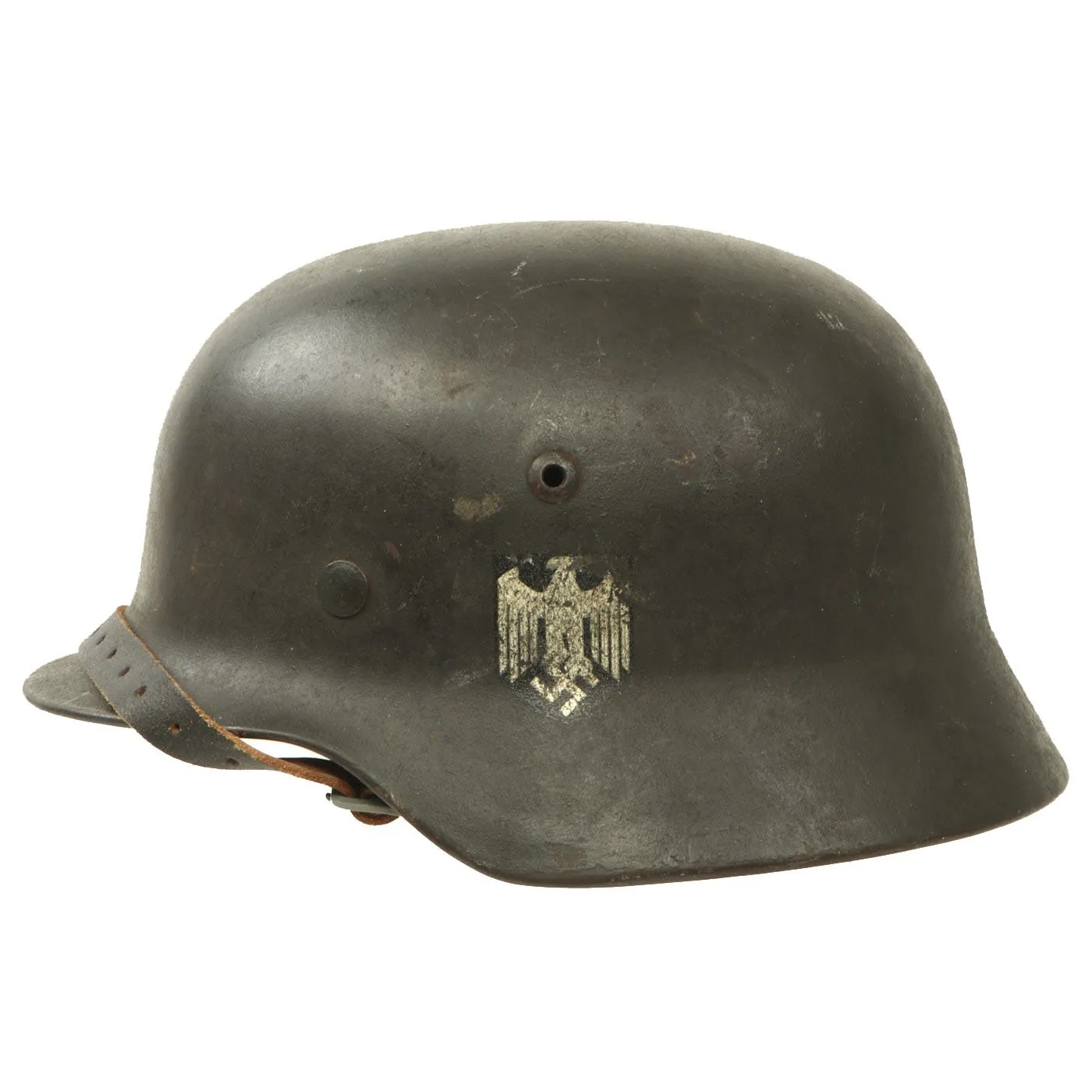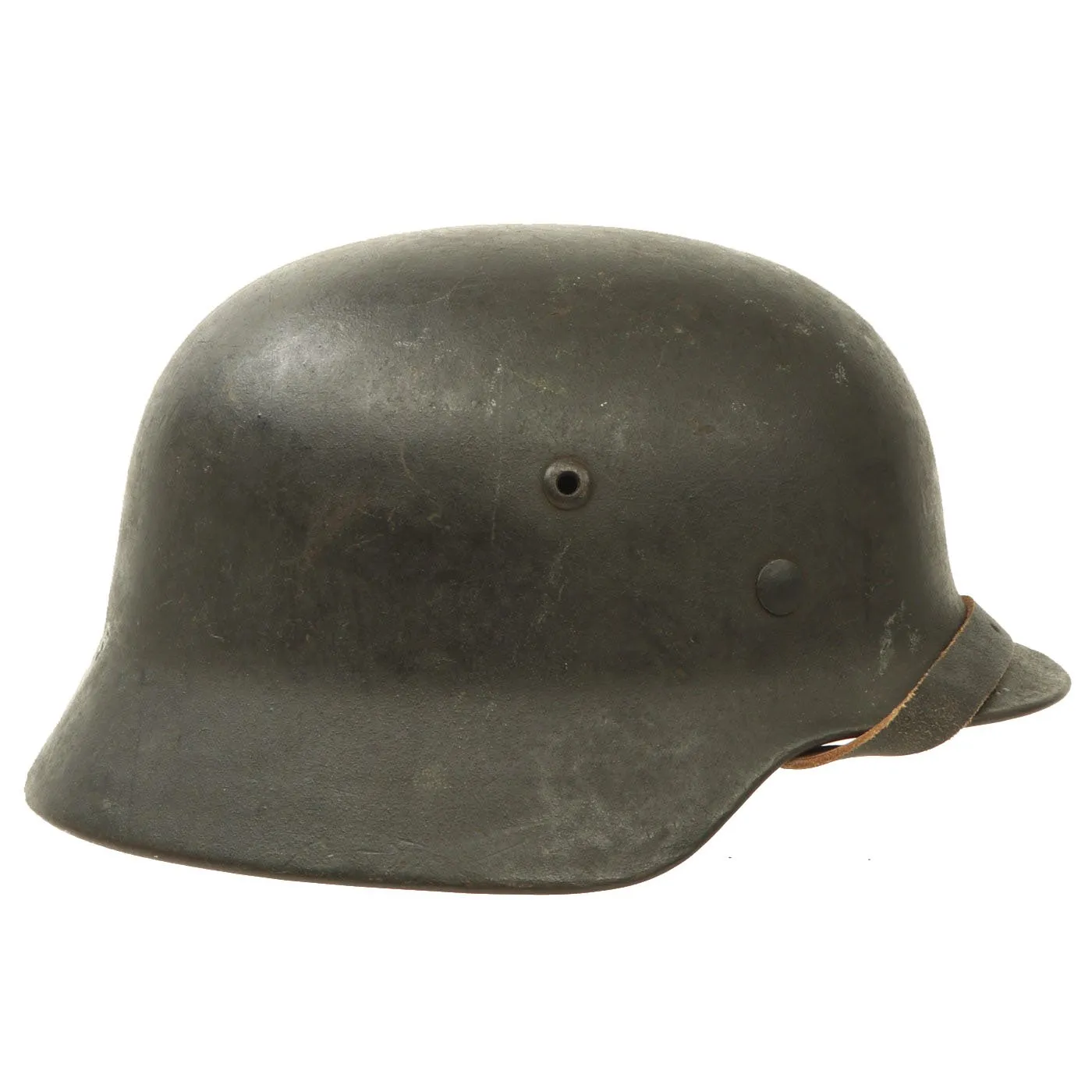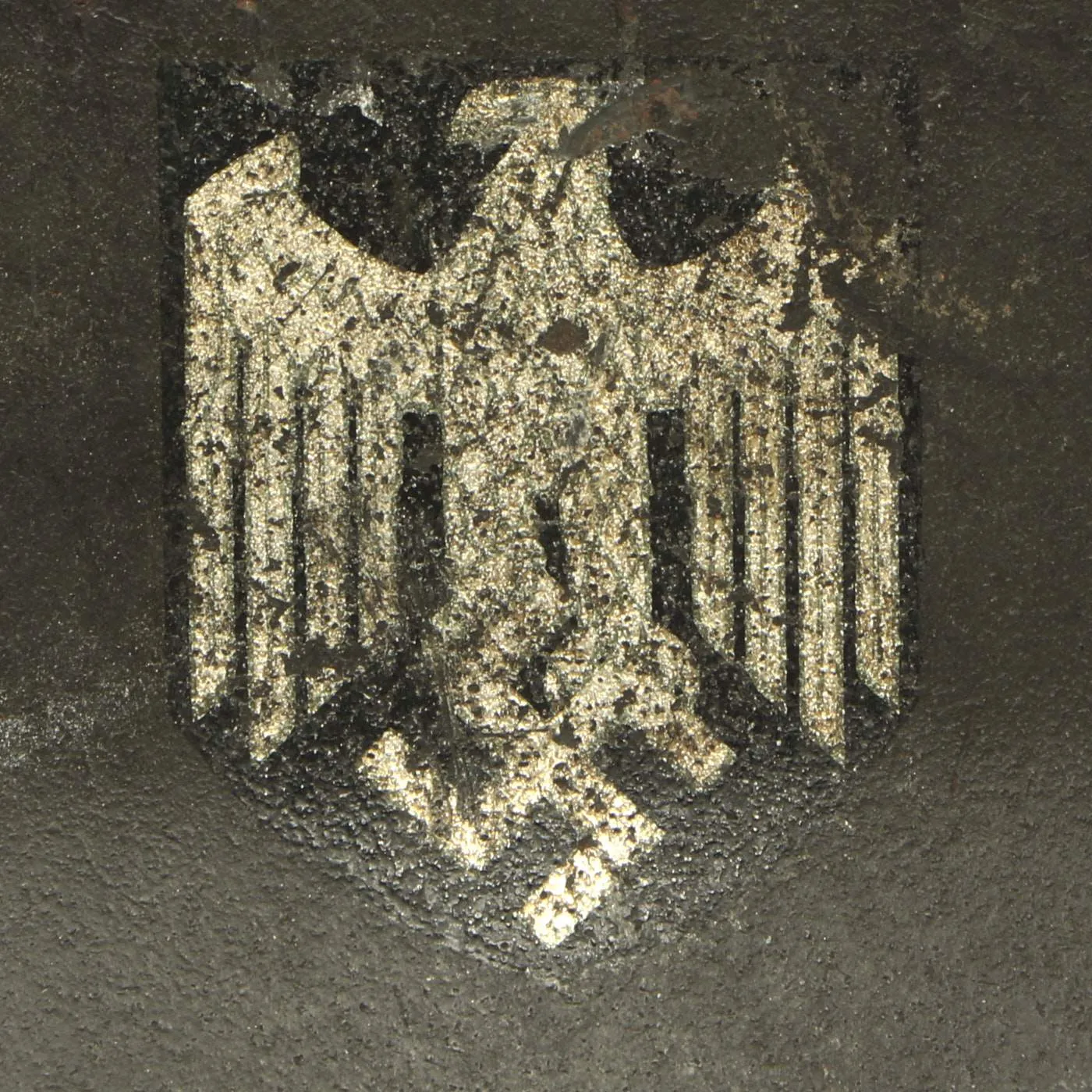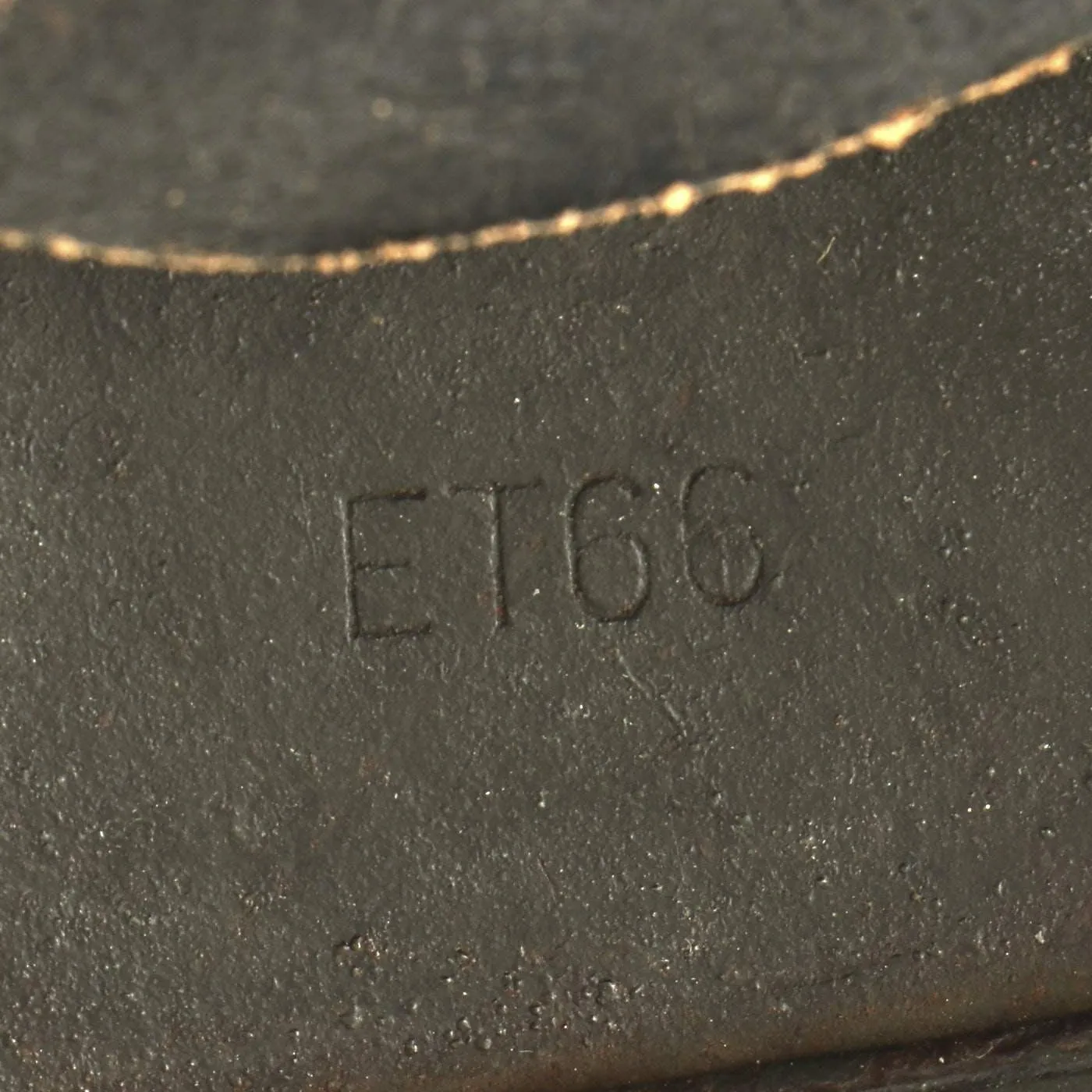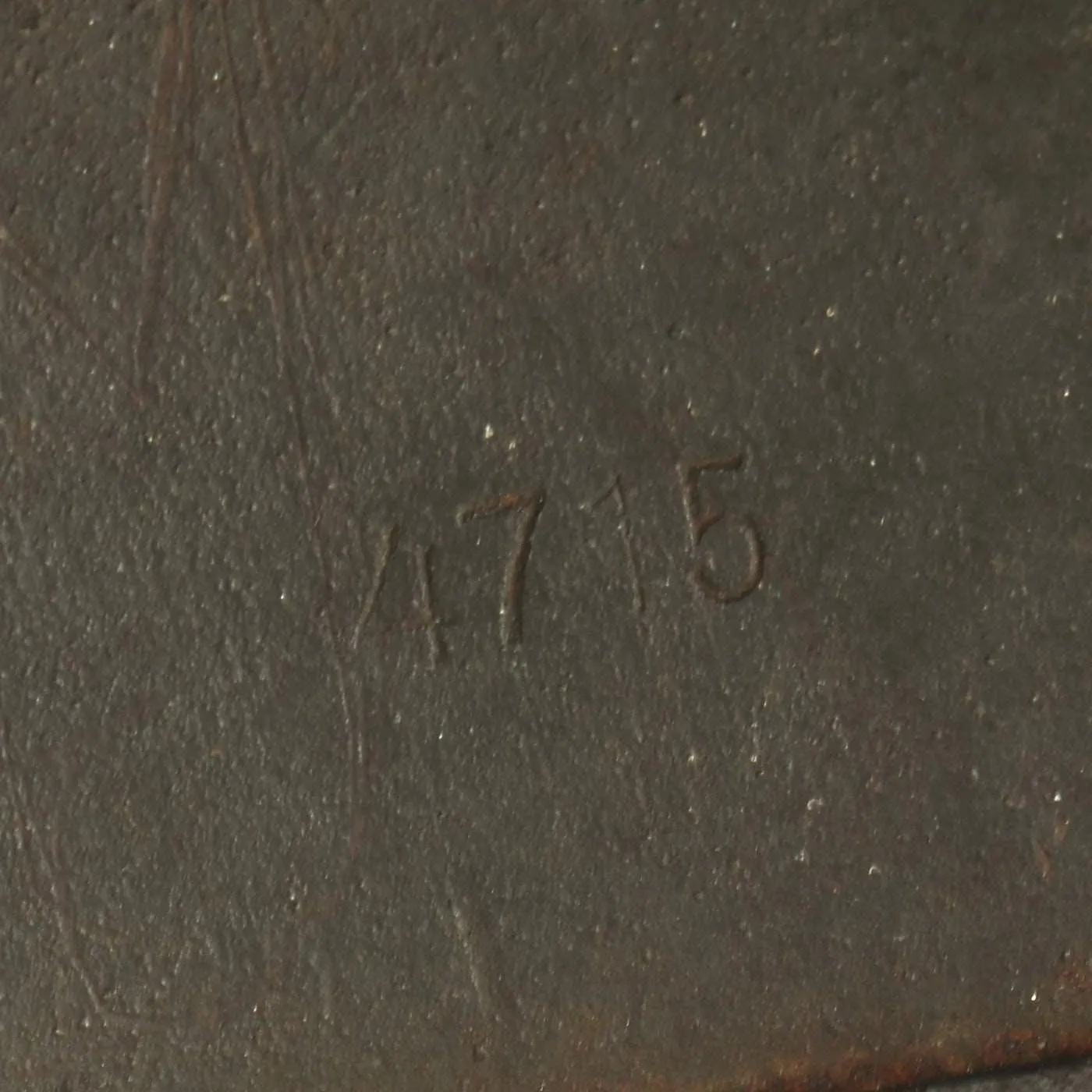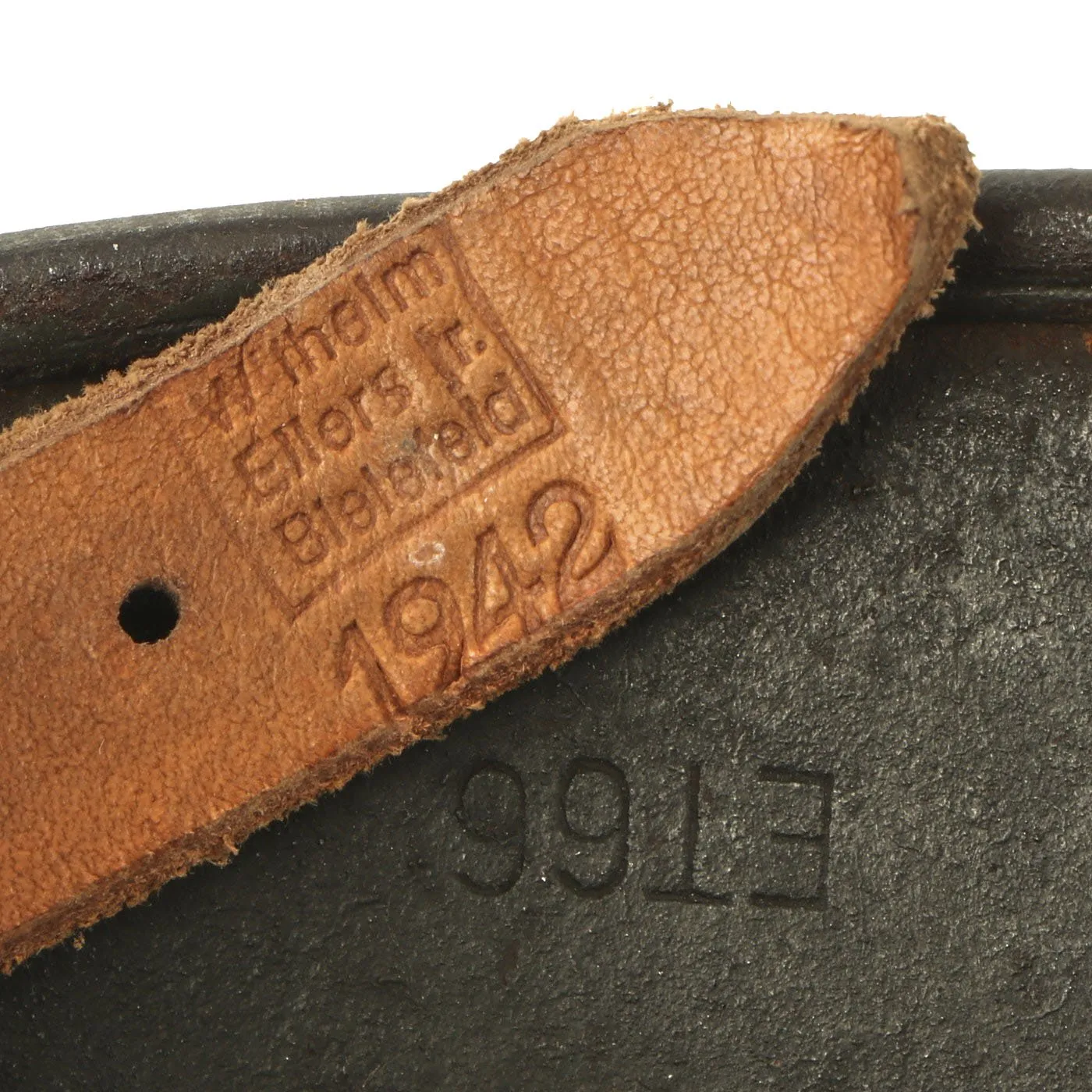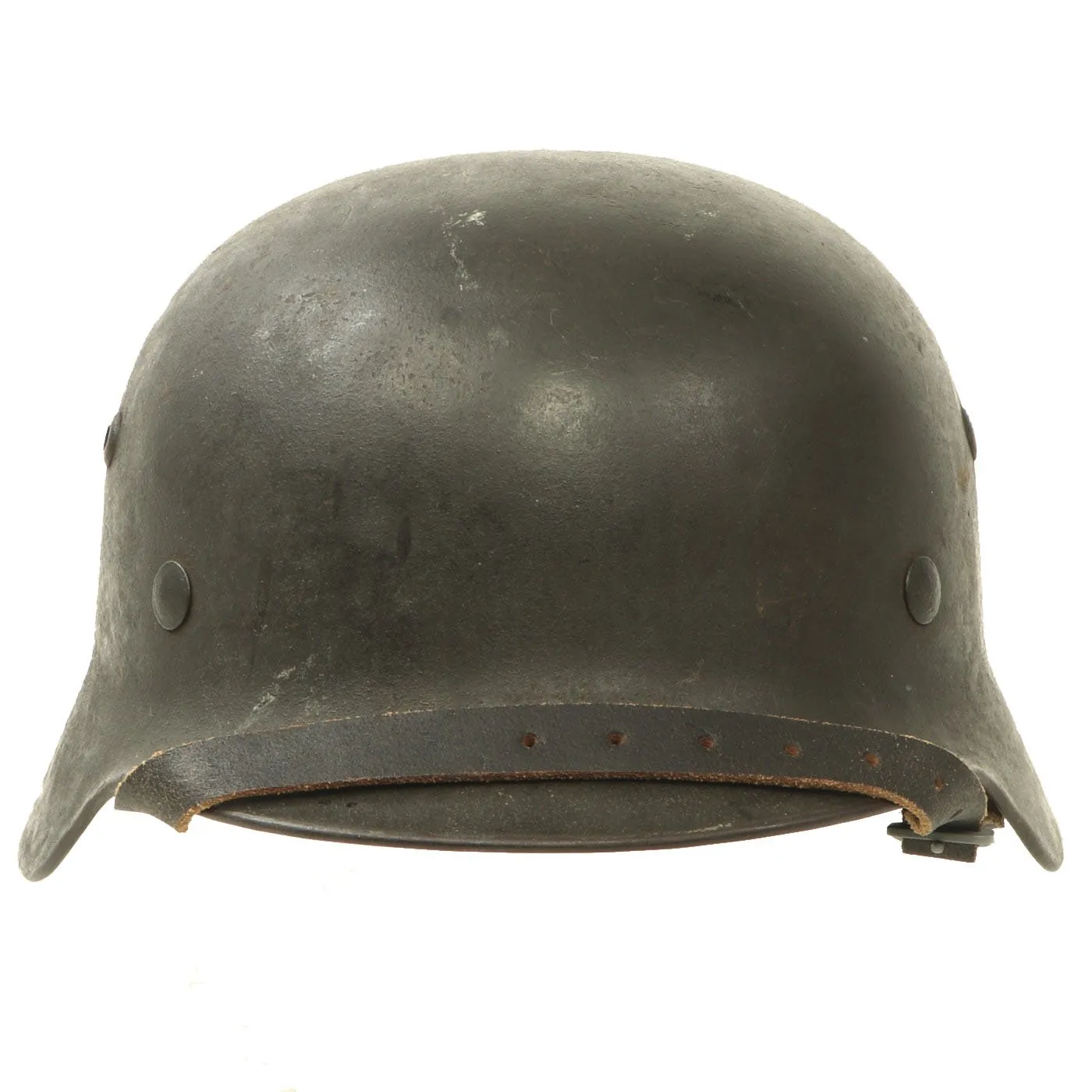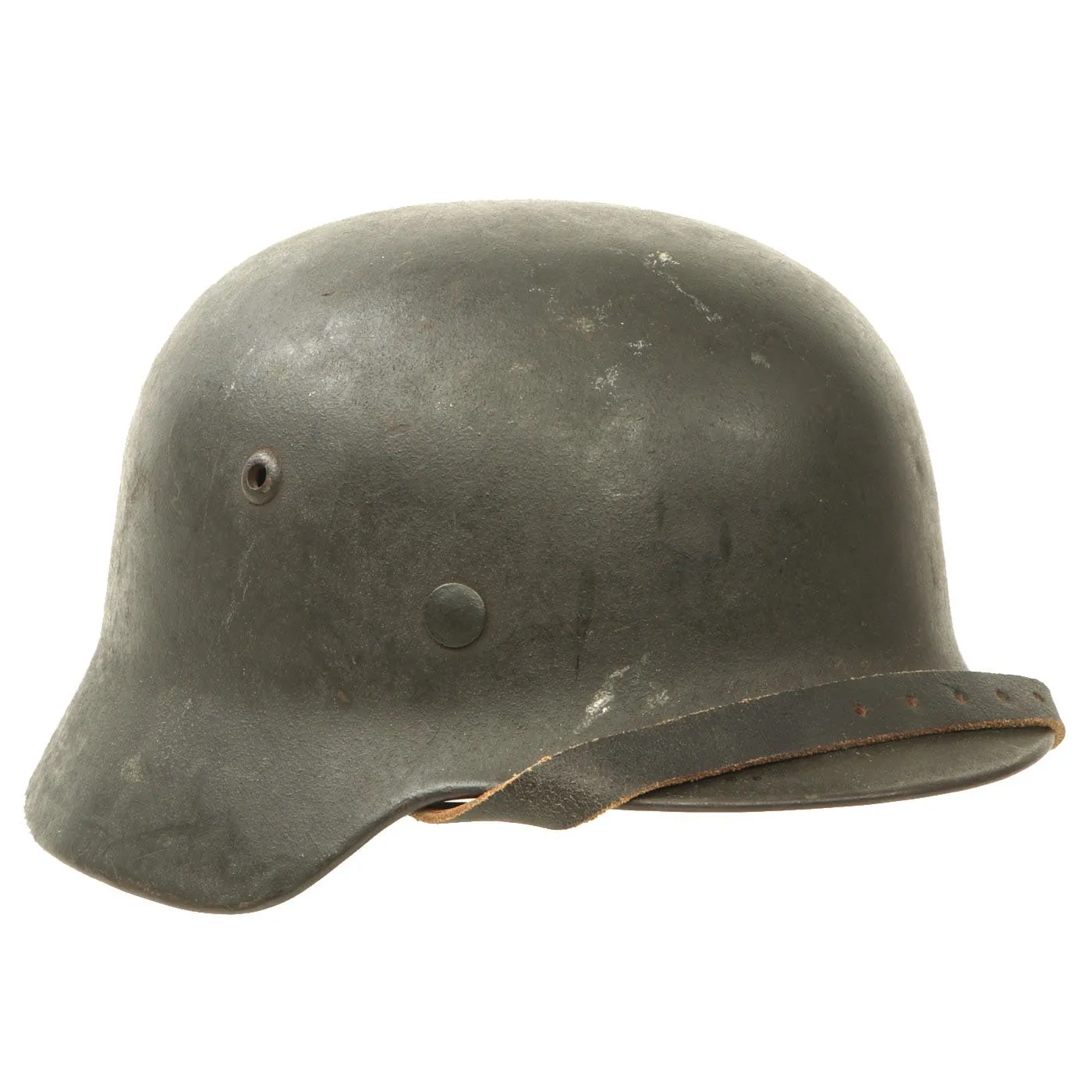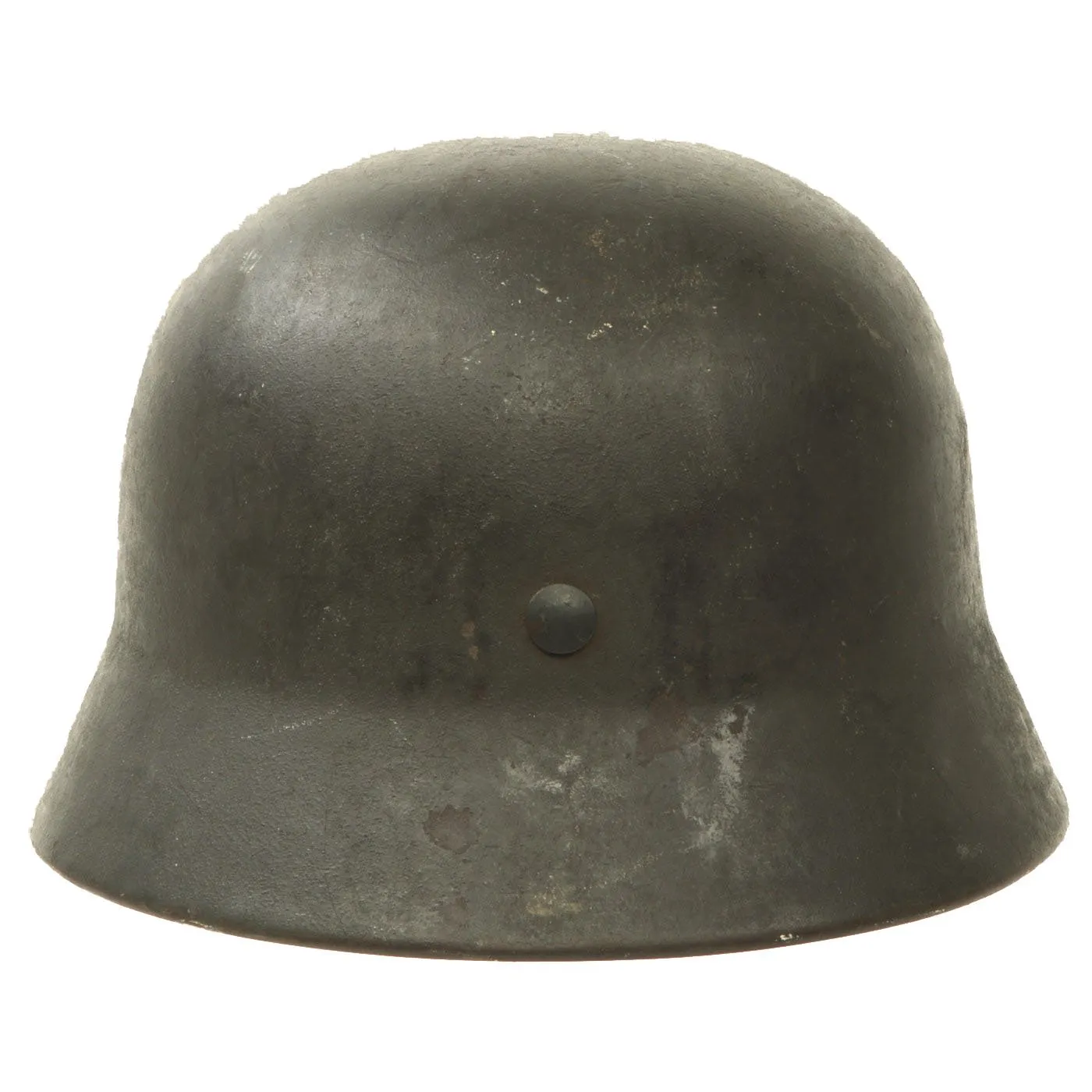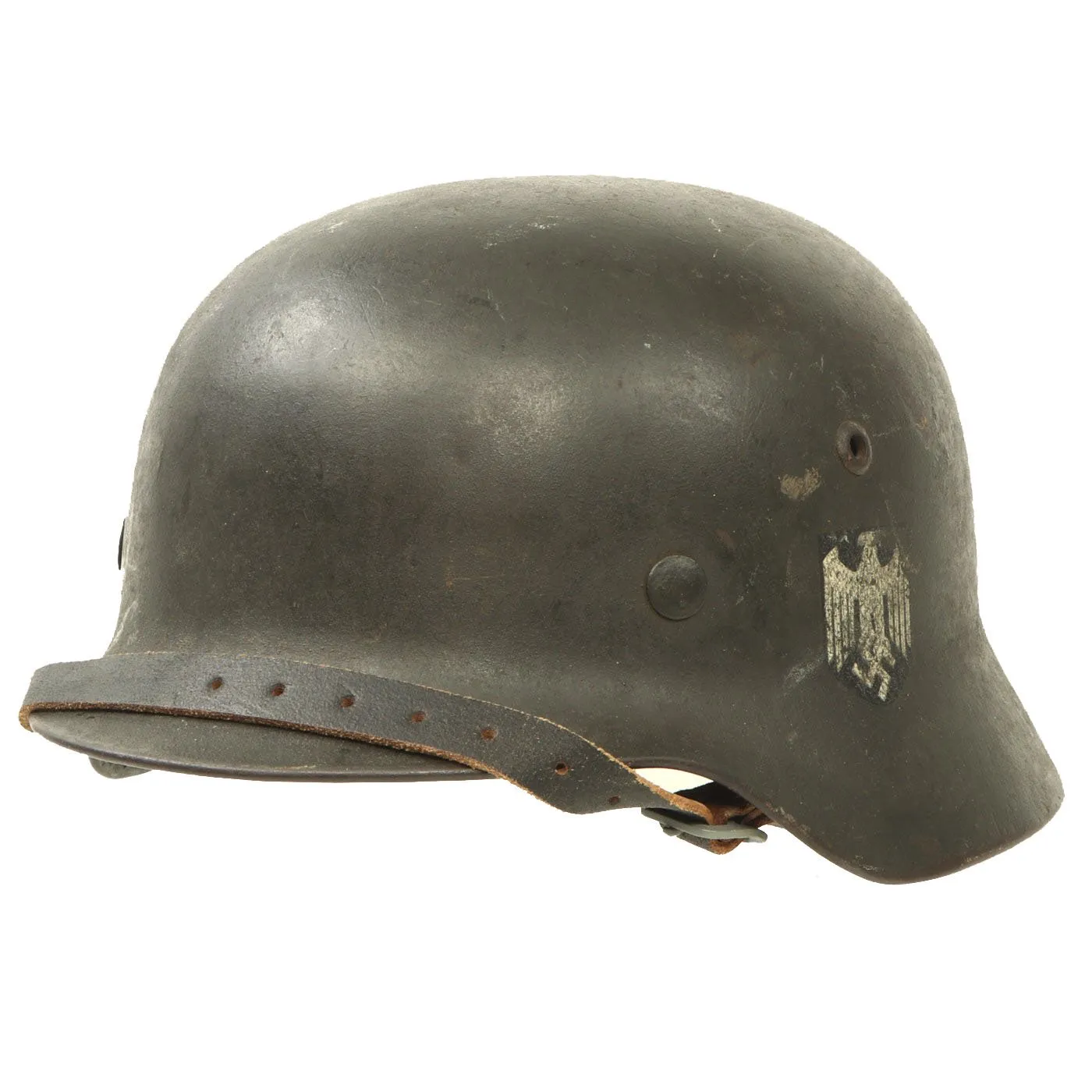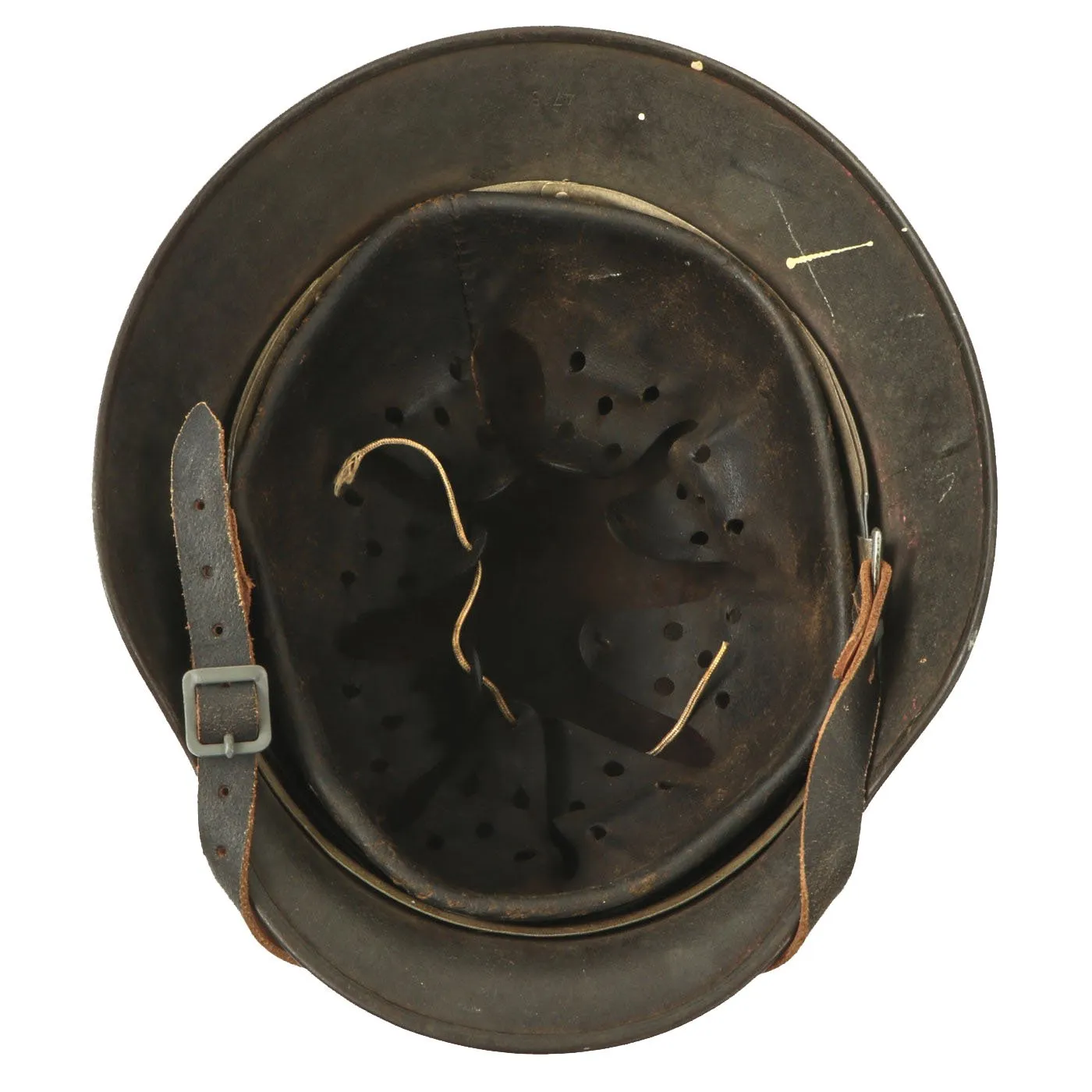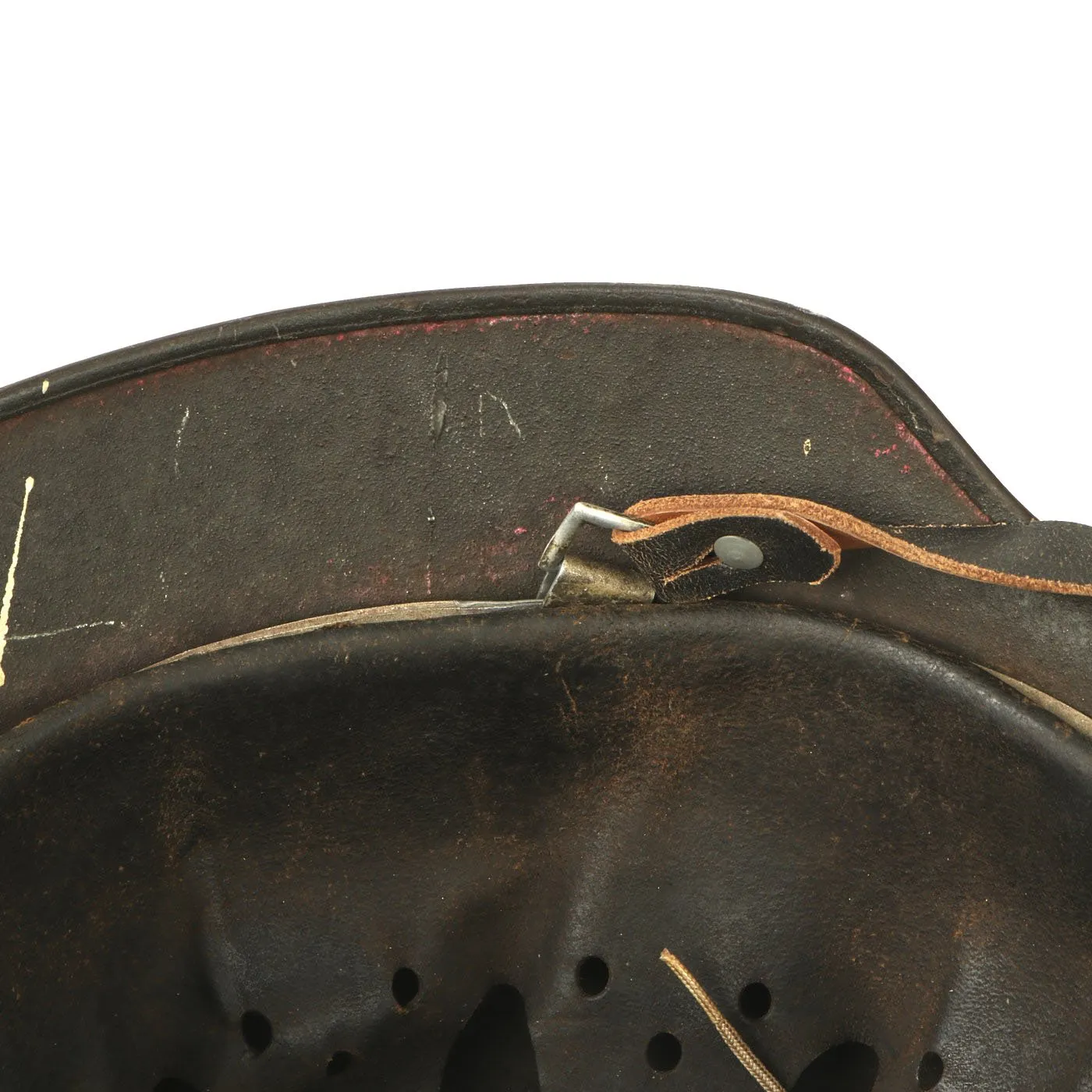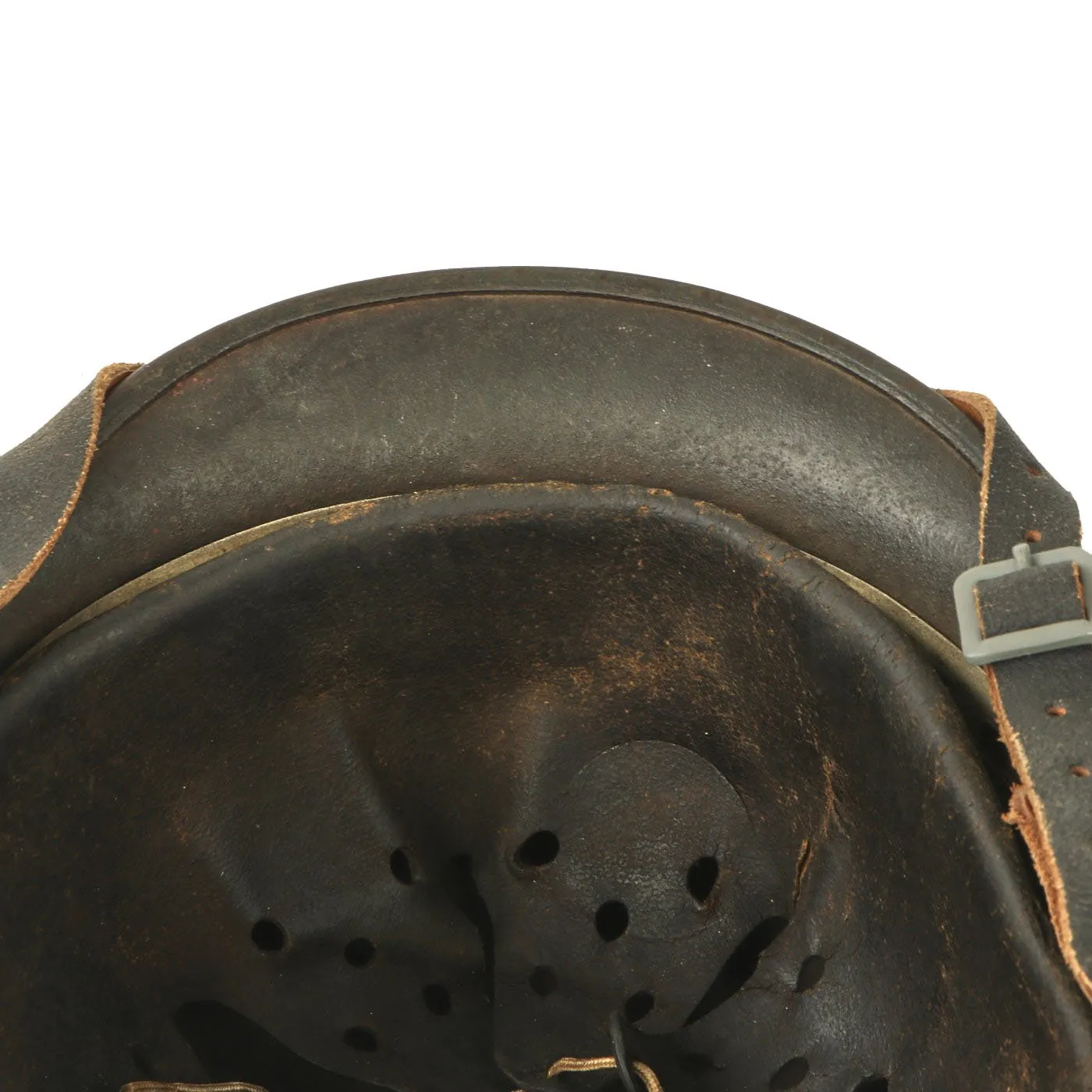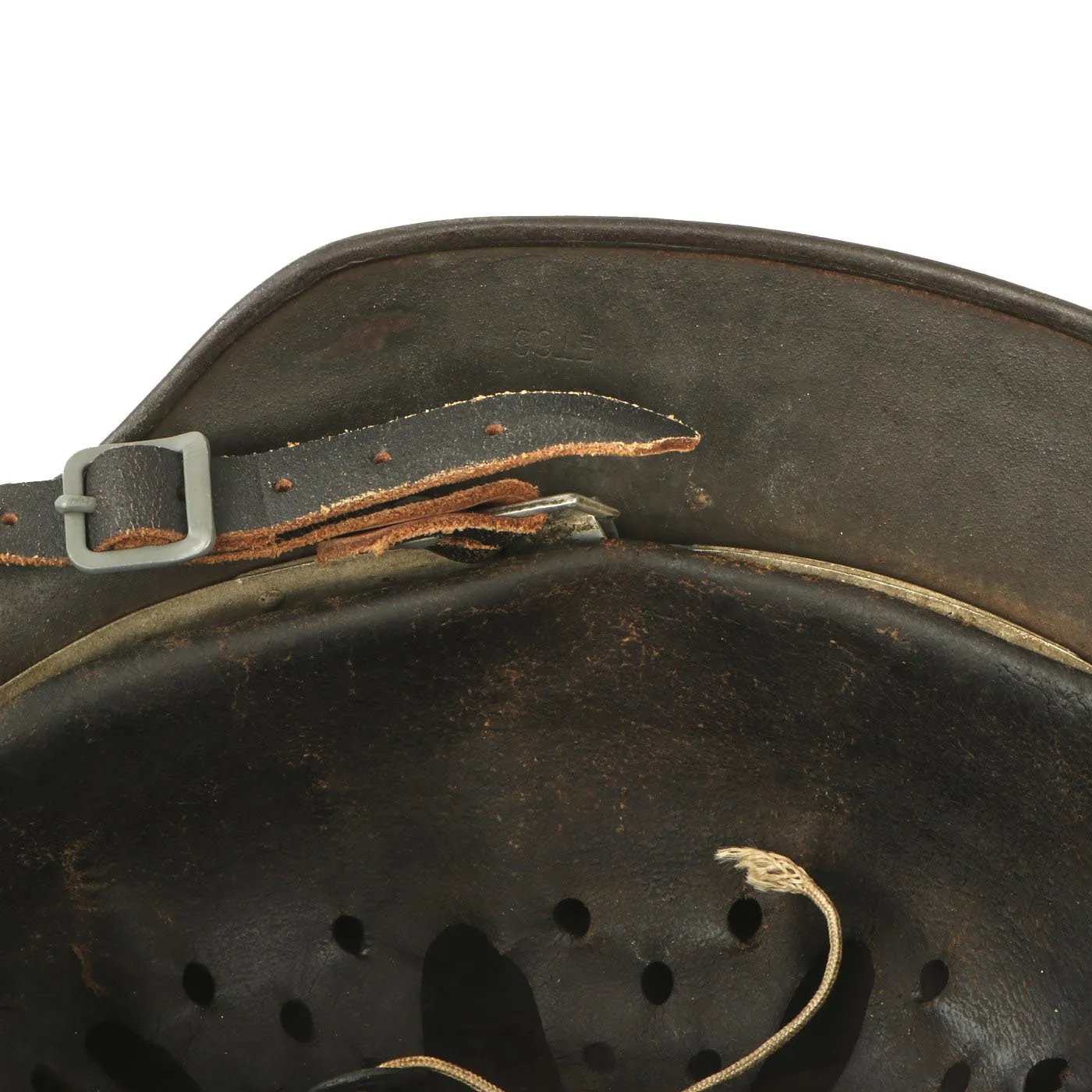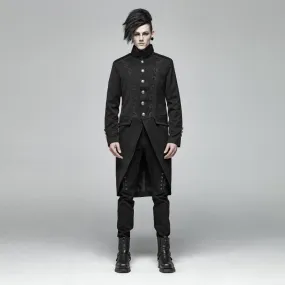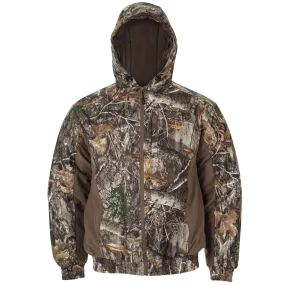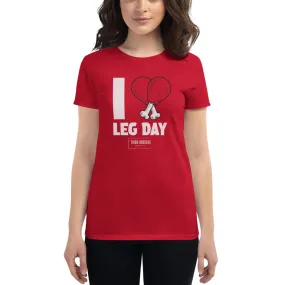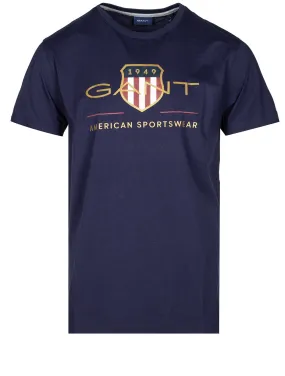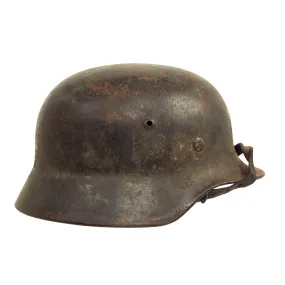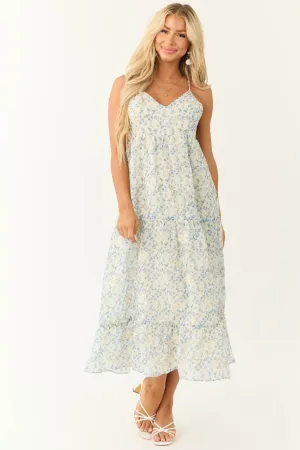Original Item: Only One Available. This is a very nice all original example of a German WWII M35 helmet, issued to the Heer (Army). This stamped sheet steel construction helmet retains much of its original lightly textured field gray paint but does show some chipping, scratches, and rust, typical of a helmet that was used in the field. The left side of the helmet features a Heer eagle decal, which is retained about 75%, with damage from wear and use, with some scratches and small chips. However it still has a lovely metallic sheen.
The reverse, interior, neck guard apron is batch number stamped 4715, and the interior, left side, apron has a stamped manufacturer's code and size, ET66 indicating that indicating it was manufactured by Eisenhuttenwerk AG, in Thale, Harz, Germany in size 66. This is a nice large size that can accommodate size 58cm and 59cm liners, or 7 1/4 - 7 3/8 US. Shells of this large size are harder to find, and more valuable to a collector.
All three liner retaining pins are intact, and still have almost all of the original paint present. The interior of the helmet still has the original M31 leather liner with all eight of its fingers intact, though it is now dark and worn from age and use. There is some tearing going to the vent holes on the liner, and the top tie strap is missing, with a short shoelace in its place. The liner band is aluminum, with square aluminum chin strap loops attached to reinforced sides. This is the last pattern before the move to galvanized steel bands. The left exterior of the liner band is marked 66 n.A / 58, indicating that it is a size 58 liner for a size 66 shell. It is also maker marked and dated on the other side:
Metall-Lederverarbeitung W.Z.
1938
Bln.- Ch'burg 5
This indicates production by the metal and leather working company Werner Zahn, based in Berlin - Charlottenburg, in the year 1938, which fits right into the early war period. The chinstrap is complete, and in very nice shape, definitely an arsenal replacement from later in the war. It is maker marked and dated Wilhelm Ellers jr. Bielefeld 1942 on the end of the strap.
Overall a very nice 100% genuine M35 Single Decal Heer Army helmet, with a great service worn look! M40 helmets of this quality are always the hard to find on the market. This is an item that will only continue to appreciate in value over time.
The first "modern" steel helmets were introduced by the French army in early 1915 and were shortly followed by the British army later that year. With plans on the drawing board, experimental helmets in the field, ("Gaede" helmet), and some captured French and British helmets the German army began tests for their own steel helmet at the Kummersdorf Proving Grounds in November, and in the field in December 1915. An acceptable pattern was developed and approved and production began at Eisen-und Hüttenwerke, AG Thale/Harz, (Iron and Foundry Works), in the spring of 1916.
These first modern M16 helmets evolved into the M18 helmets by the end of WWI. The M16 and M18 helmets remained in usage through-out the Weimar Reichswehr, (National Defence Force, Circa 1919-1933), era and on into the early years of the Third Reich until the development of the smaller, lighter M35 style helmet in June 1935.
In 1934 tests began on an improved Stahlhelm, whose design was a development of World War I models. The Eisenhüttenwerke company of Thale carried out prototype design and testing, with Dr. Friedrich Schwerd once again taking a hand.
The new helmet was pressed from sheets of molybdenum steel in several stages. The size of the flared visor and skirt was reduced, and the large projecting lugs for the obsolete armor shield were eliminated. The ventilator holes were retained, but were set in smaller hollow rivets mounted to the helmet's shell. The edges of the shell were rolled over, creating a smooth edge along the helmet. Finally, a completely new leather suspension, or liner, was incorporated that greatly improved the helmet's safety, adjustability, and comfort for each wearer. These improvements made the new M1935 helmet lighter, more compact, and more comfortable to wear than the previous designs.
The Army's Supreme Command officially accepted the new helmet on June 25, 1935 and it was intended to replace all other helmets in service.
More than 1 million M1935 helmets were manufactured in the first two years after its introduction, and millions more were produced until 1940 when the basic design and production methods were changed, replacing the multi-piece riveted vent with one stamped directly into the steel. Later, in 1942 the rolled steel rim was removed from the pattern to further expedite production.




